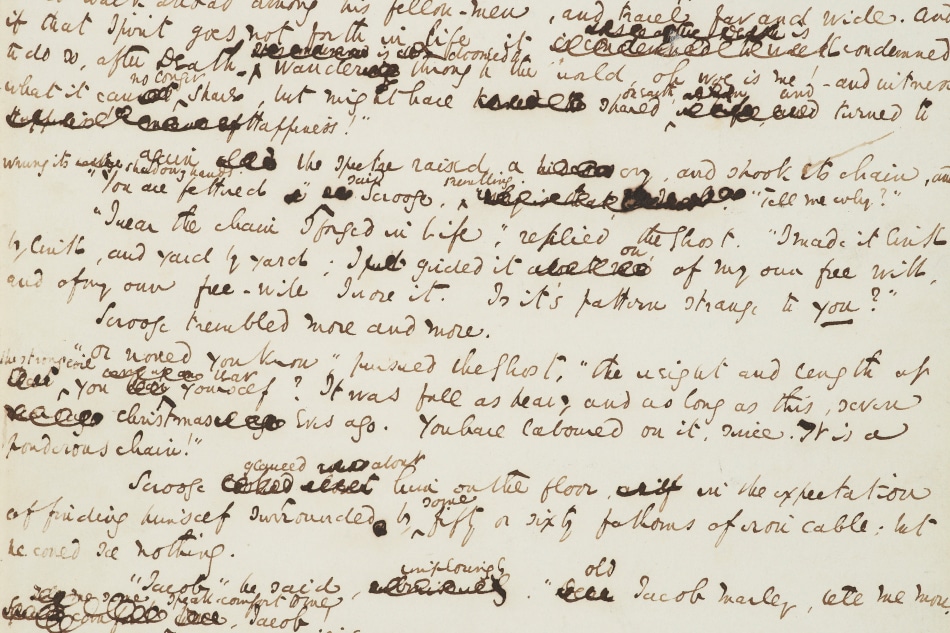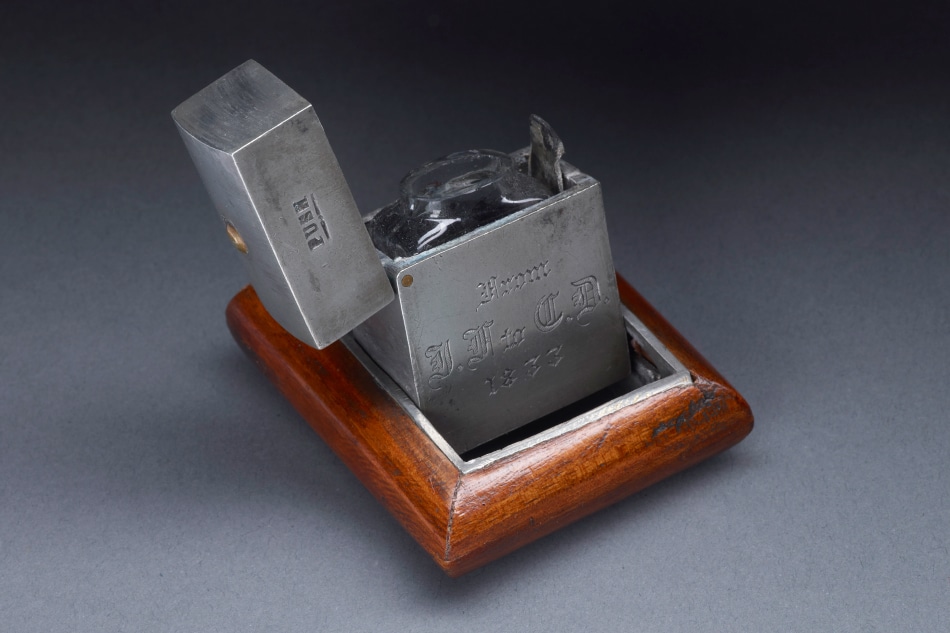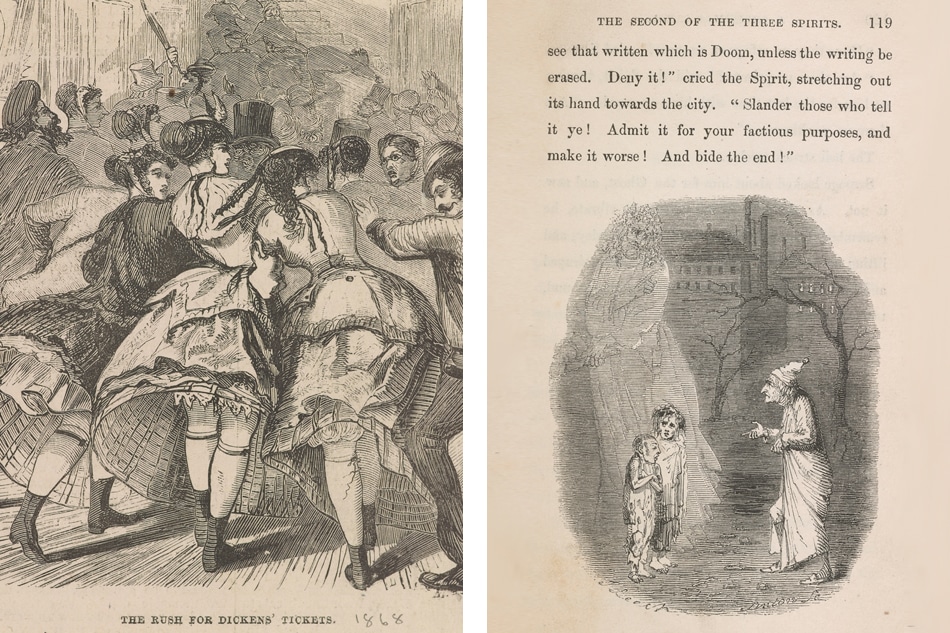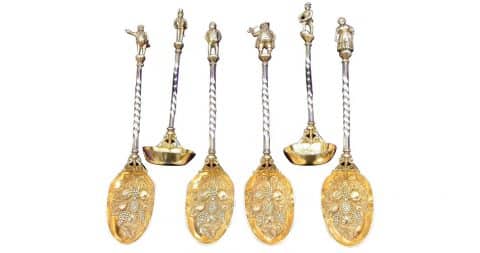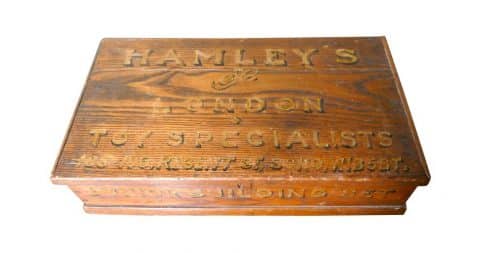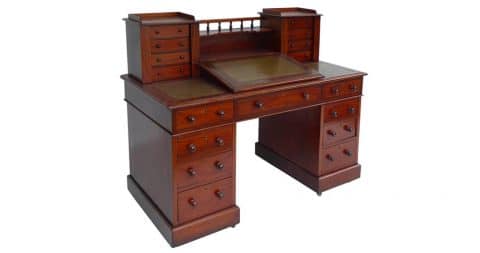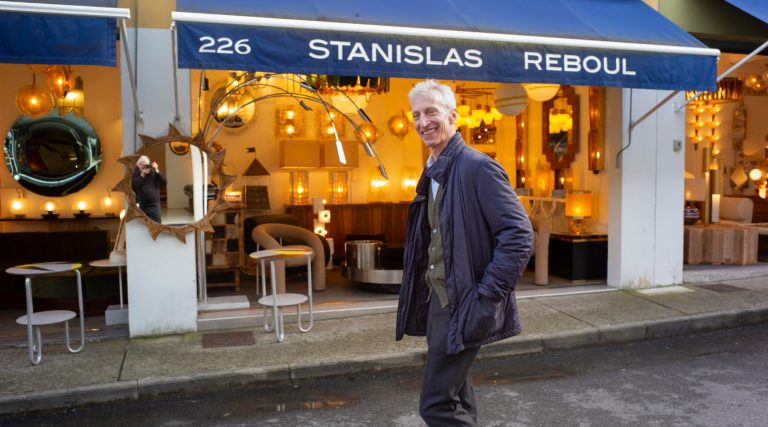
December 11, 2017The Morgan Library & Museum’s Charles Dickens exhibit features Scrooge’s Third Visitor, 1843, by John Leech, an illustration used in the first edition of A Christmas Carol. Top: A detail of the playbill for a dramatization of the story produced at London’s Theatre Royal, Adelphi, on February 19, 1844. Photos by Graham S. Haber
Ever since A Christmas Carol was first published, in 1843, Charles Dickens has been inextricably linked to the holiday season. The book, which features the miser Ebenezer Scrooge, the underprivileged but uncomplaining Tiny Tim and a trio of tour-guide ghosts, was an immediate success, selling out its first print run in less than a week and going back to press repeatedly. Upon publication, the story was adapted for the stage. To this day, theatrical versions of Dickens’s Christmas tale entertain holiday audiences around the world, and new film adaptations appear with regularity.
The Morgan Library & Museum, in New York City, has its own annual Dickens tradition. Every year for at least the last 50, the library has exhibited the original handwritten manuscript of A Christmas Carol, which John Pierpont Morgan himself acquired from a London bookseller in the 1890s. Typically, it is shown in a single case in the library’s Charles Follen McKim–designed building.
This year, however, the Morgan is mounting a larger show, “Charles Dickens and the Spirit of Christmas” (through January 8, 2018), which is, according to the Morgan’s director, Colin B. Bailey, “our most comprehensive look at the creation of this masterpiece and Dickens’s personal motivations. The success of A Christmas Carol was a turning point in the author’s career, as he found himself in wide demand not only as a writer but as a performer capable of captivating audiences with his public readings.”
By 1843, Dickens had already published five novels, including Nicholas Nickleby, and he was in the midst of writing Martin Chuzzlewit, which, like most of his novels, came out in monthly installments. It was not selling well. He and his wife, Catherine, were expecting their fifth child, and the family had recently moved into a larger and more costly house. In short, Dickens needed money.

During his 1867 reading tour in the United States, Dickens was photographed in the clerk’s office of the District Court for the Southern District of New York. Photo by Jeremiah Gurney
His own financial situation was not all that worried him, though. Dickens had long been concerned by the plight of the urban poor. A visit in the fall of 1843 to a London “ragged school” for destitute children horrified him. At first, Dickens was determined to write an article that would expose the plight of these children and deliver a “sledge hammer blow” for social justice. But as Declan Kiely, curator of the Morgan show, explains, he reconsidered: “Instead, he redirected his righteous anger at ‘the dire neglect of the soul and body exhibited in these children’ into the writing of A Christmas Carol.”
Dickens completed the manuscript, which details Scrooge’s initial miserliness and contempt for the poor and his transformation into a generous-hearted benefactor, in a fevered six weeks. The exhibition displays an illustration from the book depicting the Ghost of Christmas Present introducing Scrooge to the children Ignorance and Want alongside a letter in which the author asks to borrow money from his lawyer.
In 1853, Dickens gave a public reading of A Christmas Carol to raise money for charity. The event was such a resounding success that he began a series of weekly readings in London. Then he toured England and Ireland, performing for enraptured crowds. An engraving in the exhibition titled The Rush for Dickens’ Tickets depicts an unruly mob pushing and shoving in the hope of seeing him.
Dickens didn’t just read from his book. He acted out scenes, often improvising in response to audience reaction. In 1867, he embarked on a reading tour of the United States, where he delivered 76 performances for more than a hundred thousand people. His message of transformation and generosity captured hearts and has shaped the holiday for generations.
Dickensian and Victorian Collectibles

